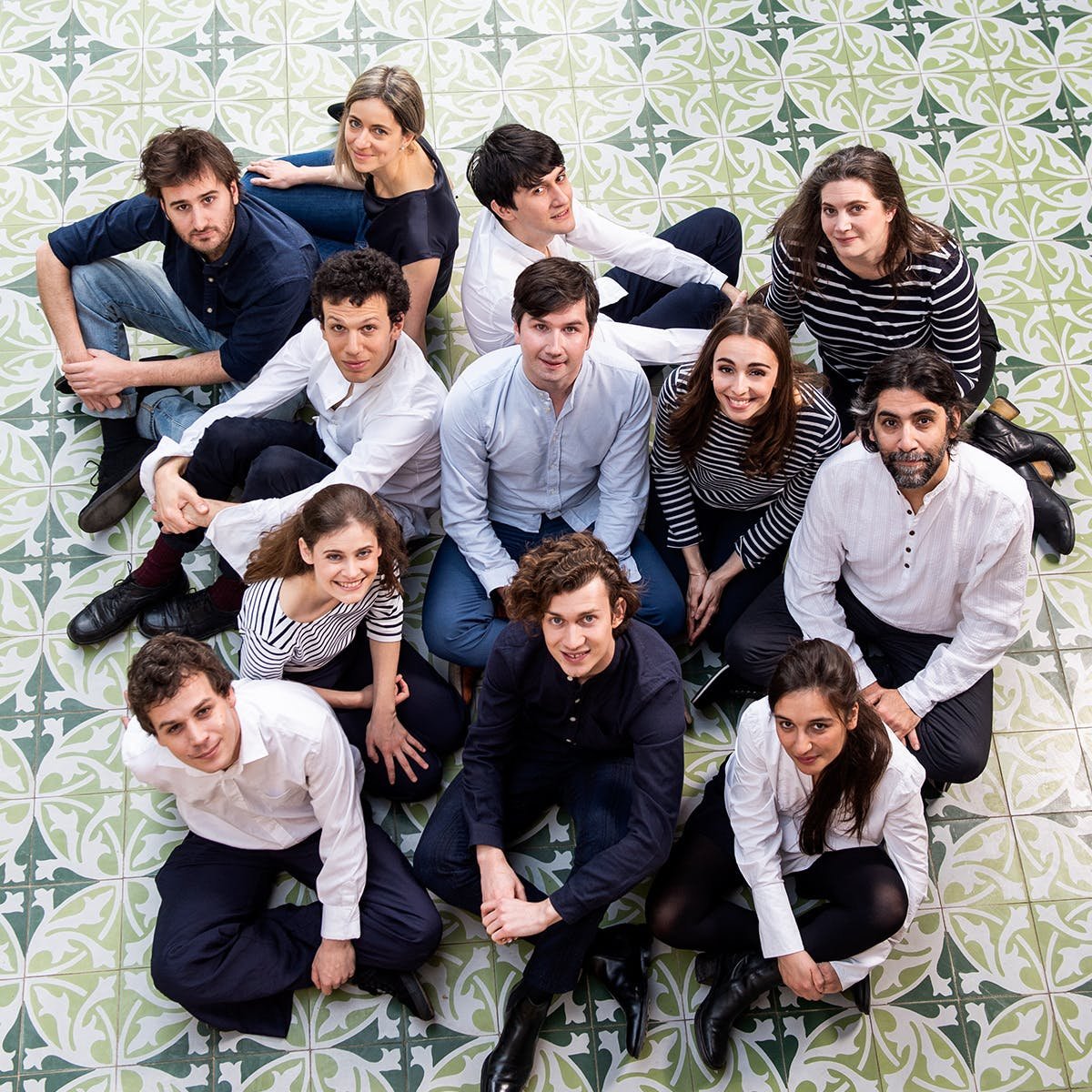This article by Jeffrey Charles Palmer was published by Australian classical and new music magazine CutCommon on 5 April 2023. To see the article in full, click here.
The Jupiter Ensemble, photographed by Angeline Moizard
I recently had the great fortune to be invited back to Princeton University’s magnificent Alexander Hall to hear the Jupiter Ensemble perform a program of the music of the great 18th-Century Venetian composer Antonio Vivaldi. I had only first heard of the Jupiter Ensemble about a month prior, and as I returned to the stately neo-Gothic campus, now dotted with daffodils and magnolia blossoms, I felt a keen sense of excitement to encounter this group of young musicians known for breathing fresh life into Baroque compositions.
When describing why he decided to form the Jupiter Ensemble, French lutenist and the ensemble’s artistic director Thomas Dunford said, “I wanted to bring together a group of exceptional musicians from the new generation, encountered while working with a large number of ensembles … It is now our responsibility, as a generation who grew up with this music, to continue bringing it alive, while making it more modern, showing just how accessible it can be, and how much it touches our hearts.”
The genuine passion for the music they play, along with their youthful vitality, was immediately apparent when Thomas, violinists Louise Ayrton and Augusta McKay Lodge, violist Manami Mizumoto, cellist Bruno Philippe, double bassist Douglas Balliett, harpsichordist Elliot Figg, and mezzo-soprano Lea Desandre came bounding onto the stage before launching into Vedrò con mio diletto from Vivaldi’s opera Il Giustino. From the start, it felt as if the entire ensemble was moving and breathing as one organism. Their synergy was astounding, with Lea’s delicate yet rich mezzo-soprano expertly weaving itself in and out between the strings in a way which made her sound as if she were an instrument herself as opposed to a voice floating somewhere above the ensemble.
Without giving the slightly stunned audience a moment to catch its collective breath, the ensemble dived into Armatae face et anguibus from Juditha triumphans devicta Holofernes barbarie – the only surviving of the four oratorios composed by Vivaldi. Lea’s expert coloratura was on full display in this piece, matched by the flying fingers of the rest of the members of the ensemble. By this point, there was no denying the incredibly high level of musicianship exhibited by each one of the performers onstage.
After a very cheerful Thomas welcomed us all to the evening’s performance and gave a short history of the Jupiter Ensemble and its love for the work of Vivaldi, we were treated to the composer’s Lute Concerto in C Major. This was Thomas’ moment to shine as he transported us all to the sun-drenched terrace of some Venetian palazzo with his gorgeously unobtrusive playing.
Lea then returned to the stage to sing Cum dederit from Nisi Dominus – the evening’s only sacred music offering. Not performed terribly often, it was an immense pleasure to hear this haunting piece with its ominously recurring ascending semitones performed so sensitively by such a masterful singer.
To close out the first half of the evening’s program, Thomas returned centerstage to give us Vivaldi’s slightly more famous Lute Concerto in D Major. Once again, we were back in that faraway city of winding canals, basking in the warm tones dripping like honey from his lute.
After a short interval, we were all in familiar territory with the Violin Concerto in F Minor, L’inverno (Winter) from The Four Seasons, showcasing the magnificent skill of violinist Louise Ayrton. This was immediately followed by the blood-chilling aria Gelido in ogni vena from Farnace, whose opening measures are strikingly similar to those of the first movement of L’inverno.
Equally dramatic yet noticeably more rousing was the aria Gelosia, tu già rendi l’alma mia from Ottone — once again, a chance to enjoy Lea’s exceptional coloratura and penchant for character embodiment. This was followed by Vivaldi’s Cello Concerto in G Minor featuring cellist Bruno Philippe. Bruno played with extraordinary flair and precision, garnering several cries of “Bravo!” from the audience after the Allegro.
The final two pieces in the evening’s program were from the opera Ercole su’l Termodonte. More than seven minutes in length, the ensemble’s performance of the pastoral aria Onde chiare che sussurrate was filled with an incredible amount of light and air, giving each of the musicians room to flourish. The violins playing in duet recalled images of flowers pushing through the still-cold earth in early spring, whilst the florid vocal line, which showcased Lea’s gorgeous instrument and improvisational skill perhaps more than any other piece in the concert, was reminiscent of a young river cascading down a mountainside. And just as we were all poised to erupt into applause, the ensemble plunged into the frantic 90-second aria Scenderò, volerò, griderò. The entire audience was brought to our feet at its conclusion.
Returning to the stage after two curtain calls, Thomas announced that for an encore, the ensemble would transition from performance mode to what he called ‘Jupiter Ensemble After-Hours’. We were treated to a piece recently composed by the ensemble called We Are the Ocean – a sort of mash-up of Baroque elegance and the sultry languidity of a late-night jazz bar. The entire ensemble, along with their tour manager, sang along on the infectious chorus which featured the lyrics: ‘We are the ocean, we are the ocean. Each one a drop, each one a drop.’
In the ocean that is the lauded tradition of Baroque music, each musician may only be but a drop. But I am quite certain that no drop from our era in that vast and shining sea is quite as pure or full of vivacious sweetness as that of the Jupiter Ensemble.
